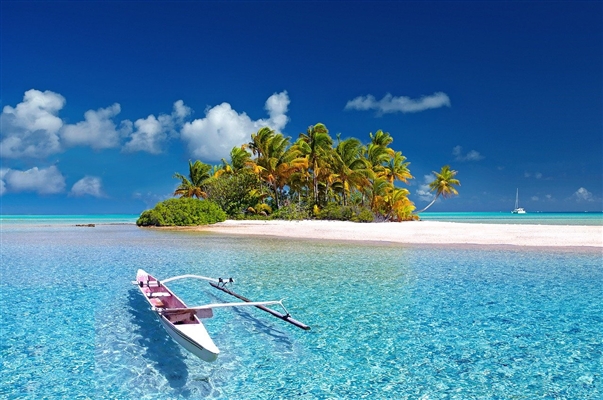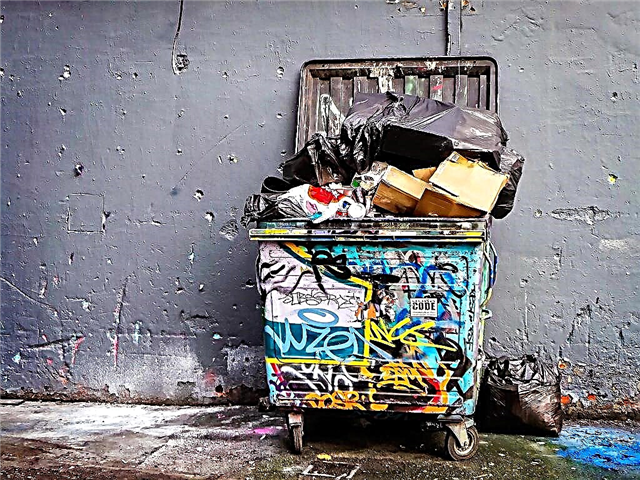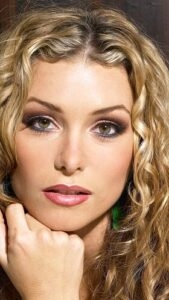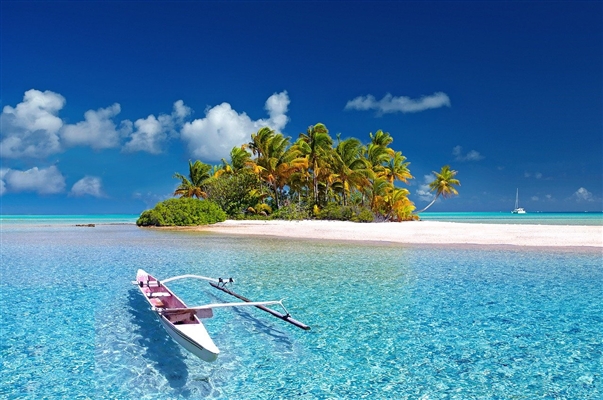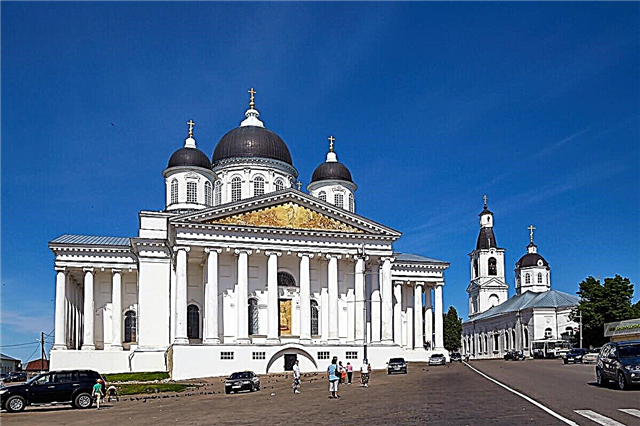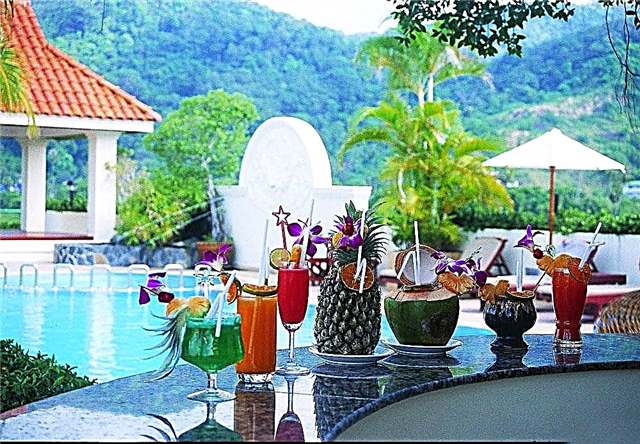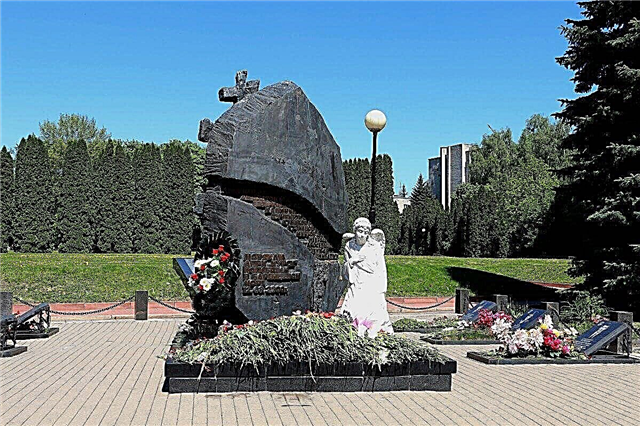Kursk is one of the religious and cultural centers of Russia, located along the Tuskar River. Three partridges in flight are visible on the city's coat of arms. It is a transport hub in central Russia. The city has a large-scale industrial complex and a scientific and educational center. Kursk played a big role in World War II and is considered a hero city.
The city is equipped with an impressive number of architectural monuments of the XIX century. The central part is especially rich in monuments, bas-reliefs and remarkable places. Now it continues to be replenished with a variety of sculptures. In total, more than 4 thousand various objects of cultural heritage are located on the territory of Kursk, including monuments of archeology, art and architecture, and military glory.
Historical and modern monuments of Kursk
List of the most famous monuments and sculptures of the city.
Memorial complex "Kursk Bulge"
The complex is dedicated to the merits of the Soviet people in the Battle of Kursk during the Great Patriotic War; the Eternal Flame is burning on its territory. The Arc de Triomphe is the central object symbolizing victory. Nearby there is a full-length monument to Marshal G.K. Zhukov. Also among the objects of the complex is the Church of St. George the Victorious, inside it there are marble tablets with the names of the victims. The territory of the memorial includes an alley of military equipment, a stele "Kursk - the City of Military Glory". The complex was opened in 1998 for the 55th anniversary of the Battle of Kursk along Pobedy Avenue.

Monument to Alexander Nevsky
A monument to the Russian prince, in his right hand he holds a sword, and in his left - a flag. It stands on a white pedestal with a gold-colored inscription: "God is not in power, but in truth." Alexander Nevsky is depicted looking to the side, steps lead to the monument. The sculpture is located in the central square of the city, at the entrance to Pervomaisky Park. The monument has been opened since 2000, the author is V.M.Klykov.

"In memory of the fallen in the Second World War 1941-1945"
The center of the memorial complex is the obelisk of Glory, next to it the Eternal Flame is burning. Steles with images of helmets of pilots and tankers, helmets of infantrymen lead to it. On the territory of the complex there is a Monument to the Unknown Soldier, a mass grave with the names of those who died in the Battle of Kursk. The memorial was opened in 2000 on the Heroes of the Kursk battle square. The complex was built on the former soldiers' cemeteries.

Monument to the sailors of the APRK "Kursk"
The names of those killed on the Kursk nuclear submarine missile cruiser in the Barents Sea are engraved on the monument. In front there is a sculpture of a white angel. The monument was opened and consecrated in 2003 at the Memorial to the Fallen. At the entrance to it there are the following words on the granite slabs: "Eternal is your feat in the hearts of generations." Sculptors - N. Krivolapov, I. Minin, S. Goryakin and G. Dreev.

Monument to G.V. Sviridov
The composer is depicted sitting cross-legged on a bench. He is dressed in a long coat, a scarf and looks into the distance. The monument has been decorating the city since 2005, it is located near the Kursk hotel. The sculpture was installed on the site of the musical college, where the composer once studied. At the foot of the granite are the words of Sviridov: "Sing to Russia, where the Lord gave and told me to live, rejoice and suffer."

Monument to V. Klykov
The famous sculptor is depicted sitting after a hard day's work with one hand on the other. Behind the figure stands his working model of the Belfry Temple, which is located on the Prokhorovskoye field in memory of the battle on the Kursk Bulge. Klykov's sculpture is made of bronze. The monument was consecrated and installed in 2007 on the avenue named after him. The author of the composition was the son of the great sculptor - A. Klykov.

"Grieving mother"
The monument is dedicated to the Kursk soldiers who died fighting in Afghanistan. A full-length woman-mother, heartbroken, is depicted, lying over the bodies of her children on cold granite slabs. They are engraved with the names of the residents of the city of Kursk, who gave their lives in the war in different years. The monument was opened in 1992 and is located in the Proletarsky park. The author of the monument is Nikolay Krivolapov.

Monument to Lieutenant Rzhevsky
The famous character in the USSR is represented by sitting on a bench and stroking a mustache with his finger. The lieutenant is dressed in a hussar uniform. The sculpture is addressed to the hero of A. Gladkov's play "Once upon a time". The monument was opened in 2010 at the building of the shopping center "Manezh". The sculptor is Vladimir Zhbanov. There is a sign that if you rub Rzhevsky's finger and make a wish, then it will definitely come true. Therefore, one finger is different from the rest.

"Modern Entrepreneur"
It is a bronze figure of a guy in a fashionable suit, tie and shoes. A young man drags behind an old cart with large sacks. These are the problems of entrepreneurs: loans, taxes, corruption, approvals and licenses. But the guy still moves towards the sign with the words "New Russia". The monument was opened in 2014 for the City Day. The idea belongs to the businessman N. N. Greshilov.

"To Hero-Pilots of the 16th Air Army"
The monument is presented in the form of three pylons directed upwards, which are sheathed with metal sheets. They look like the wings of an airplane. The faces of the pilots and the years of the Great Patriotic War are depicted on the edges. The monument is made in the style of Soviet modernism. The structure was built in 1975 in honor of the air unit soldiers who fought on the Northern face of the Kursk Bulge in 1943.

Monument to A.S. Pushkin
The poet is depicted in full growth and wears a long cloak. The image is made in the traditions of romanticism, which can be seen in the pose and turn of the writer's head. The sculpture is installed on a high pedestal. It contains bas-reliefs with images of the heroes of Pushkin's works. The monument was opened in 2000 and is located on Teatralnaya Square, in front of the entrance to the Drama Theater. There are flowerbeds and lanterns near the monument.

Monument to V.I.Lenin
It is one of the best sculptures to the leader in Leniniana by the famous sculptor M. G. Manizer. It was first opened in 1933 on the Red Square of the city. The monument was built with donations from the residents of Kursk. In 1956, a new opening of the monument, rebuilt after the war, took place. This time, not only the sculpture was thought out, but also the improvement of the area around the monument to V. Lenin.

Monument to the heroes of railway workers
Metal stele 7 meters high on a round embankment. It is a bronze composition consisting of two steam locomotives that cross the arch. There is a bell in the symbolic arch. Memorial plaques are placed along the perimeter of the monument. The monument was erected in 2013 and is located in the park near the House of Culture of Railwaymen. Architect - Elena Kholodova, sculptor - Vladimir Bartenev.

"Tankmen-heroes of the Battle of Kursk"
The IS-3 tank is located on a high granite pedestal. At its foot you can see the date of the Battle of Kursk "1943" in large numbers. The monument has been opened since 1987 and is located at the intersection of Dzerzhinsky and Engels streets. The monument is dedicated to the events on the Kursk Bulge in 1943. The author of the monument is V.P. Semenikhin. Two legends are associated with it, the first - the tank took part in the Battle of Kursk, the second - the car itself drove onto the pedestal.

Monument to K. Rokossovsky
The pedestal is made in the form of two light concrete structures. The sculpture of Marshal K. Rokossovsky is depicted in military uniform with binoculars and a tablet. The monument was opened in 2005 in honor of the 62nd anniversary of the Battle of the Kursk Bulge, during which he commanded the Central Front. The monument is located on the square that bears the name of the marshal since 1971. The author of the sculpture is Vyacheslav Klykov.

Monument to F.E.Dzerzhinsky
A bronze figure 5 meters high on a granite pedestal. The sculpture was installed instead of the previous plaster monument to Dzerzhinsky, which has been standing since 1952. The revolutionary is presented stern, wearing a long overcoat.A new monument was opened in 2017 in the park named after him. The appearance of the monument is timed to coincide with the 140th anniversary of the birth of F. Dzerzhinsky. The sculpture was installed with donations from veterans of the State Security Administration.

Monument to K. D. Vorobyov
The writer is depicted against a background of poplar, the tree trunk is almost devoid of bark. The composition has a deep meaning. Such a poplar grew in a concentration camp, through which the prose writer passed, the bark was eaten by prisoners, as they were starved to death. However, new leaves appeared on it every spring. The monument was opened in 2009 in a public garden near the Kursk Regional Philharmonic. The monument is timed to coincide with the 90th anniversary of the writer.

Monument to E. Nosov
The bronze writer is depicted sitting on the bank of a river and thoughtfully contemplating the world around him. Sheets with the titles of stories and sketches of future works are scattered carelessly nearby. The monument was opened in 2005 at the intersection of Chelyuskintsev and Blinov streets. The monument is located near the writer's home and square, where he loved to relax and enjoy nature. The sculptor is Vladimir Bartenev.

"To medical workers who died in the Second World War 1941-1945"
The monument depicts a nurse and a soldier with a gun in her hands, whom she rescues, at the moment of a grenade explosion. The monument was opened in 2005 and is located opposite the main building of the Kursk State Medical University. The initiator of the Great Patriotic War and the head of the veteran union of medical workers - A. F. Saraev. Authors - M. Zautrennikov, N. Minin.

"Kurskaya Antonovka"
It is an apple 2 meters high and weighing 150 kg. The sculpture is made of copper sheet by punching. Apples of this variety are one of the symbols of the region. The monument was opened in 2008 on the square in front of the administrative building of Kurskprombank and the Resurrection-Ilyinsky Temple. The opening of the unusual monument is timed to the celebration of the Transfiguration of the Lord, among the people - "Apple Spas".

"Date"
A sculpture of a young guy with a small bouquet of wildflowers in his hands. The young man is depicted hurriedly flying on a date, breaking through the wall, which symbolizes the obstacles on the path to love. The monument was opened in 2013 and is located on Perekalsky Square. There is the following inscription on the wall: "It all starts with love ...". The author of the non-standard sculpture was Vladimir Bartenev.

"My first teacher"
Bronze sculpture of a woman, 3 meters high. She holds a class magazine in her hands and stands near the blackboard. On the back of the blackboard there are lines from a poem by N. Nekrasov about the vocation of a teacher. The monument was unveiled in 2015 at the intersection of Kirov and Radishchev streets, near the Kursk State University and the Education and Science Committee. The sculptor is Nikolay Krivolapov.

"To the heroes-artillerymen"
On a granite pedestal there is an anti-tank gun of the artillery battery of Captain I. Igishev and an obelisk 8 meters high. The names of the deceased soldiers are carved on marble slabs. The territory of the monument is landscaped, and birches are planted around the perimeter. The composition was opened in 1943, and in 1995 a major overhaul was done. The monument is located at an altitude of 240 near the southeastern outskirts of Teply.

Steam locomotive-monument Em 728-73
A reconditioned steam locomotive that has worked for over 40 years. Located on an erected pedestal. This locomotive ran only 1 million 300 thousand km. He transported goods even before the war, and during it he delivered troops and military equipment to the front. The monument was erected in 1987 on the eve of the Victory Day. It complements the exposition of the Kursk locomotive depot museum. Idea - A. Manzhosov.

Monument to Yuri Nikulin and Mikhail Shuydin
Sculptures of famous artists are depicted on horseback. The author presents a scene of their famous number "Horses". The following inscription can be seen on the pedestal: “To the soldiers of the Great Patriotic War. To the genius Russian clowns Yuri Nikulin and Mikhail Shuydin. " The monument was opened in 2011 on the square in front of the circus building. The sculpture was created by Igor Minin.

Monument to G. Panteleev
It is a bust of the hero of the Soviet Union Gabriel Panteleev on a pedestal-column. On the wall behind it are four granite slabs with the names of other war heroes from the prosecutor's office. The monument was opened and consecrated in 2003 near the building of the procurators. The author of the monument is Vyacheslav Klykov. The initiative to create the composition belongs to the employees of the city prosecutor's office.

"To fighters for Soviet power"
The memorial sign was installed in 1967 on the square. The names of 81 victims of the introduction of Soviet power in the period from 1917 to 1922 are written on the plates. The authors of the monument were artists M. Zautrennikov, V. Kapustin and architect M. Teplitsky. The place of installation is remembered by the fact that Soviet power was declared here in Kursk and the province in the cinema "Giant".

"Strong handshake"
The monument of two hands shaking hands symbolizes the friendship between Russia and Armenia. The monument was installed in 2015 in the center of a new square at the intersection of Lysaya Gora, Leo Tolstoy and Chelyuskintsev streets. The composition was made by Armenian craftsmen and brought to Kursk. The area around is completely ennobled, benches are installed, lighting is connected and green spaces are planted.

"Kursk nightingale"
It is a laurel wreath, which is a symbol of glory and honor. Above there is a bronze nightingale, which is a symbol of the Kursk region. The sculpture is 3 meters 10 centimeters high. The monument was opened in 2016 for the City Day on the square in front of the shopping and entertainment center "Grinn". The author of the unusual sculpture was Yuri Kireev.

"Governor's carriage"
A pair of bronze horses harnessed to a carriage. Such monuments were erected in three more cities: Minsk, Tobolsk and St. Petersburg. The carriage is made in full size and completely copies the governor's of the 19th century. The composition was installed in 2010 at the construction of the Manezh shopping center. The author of the monument was the Belarusian sculptor Vladimir Zhbanov.



